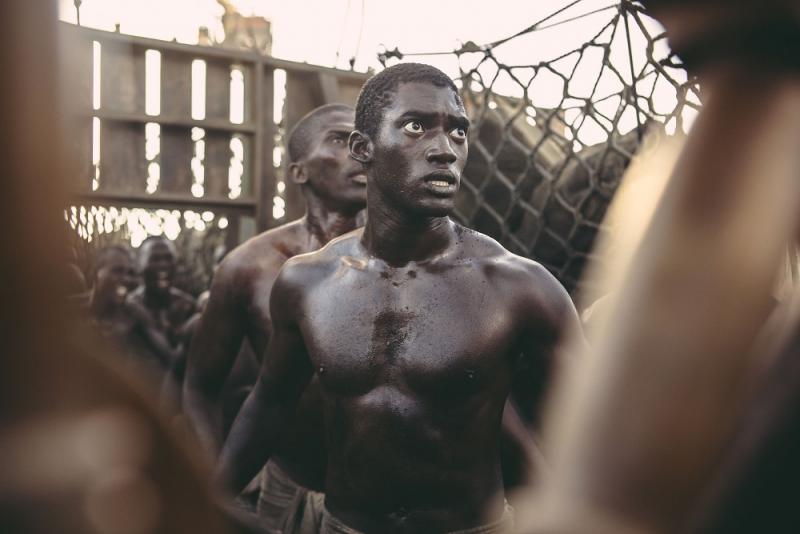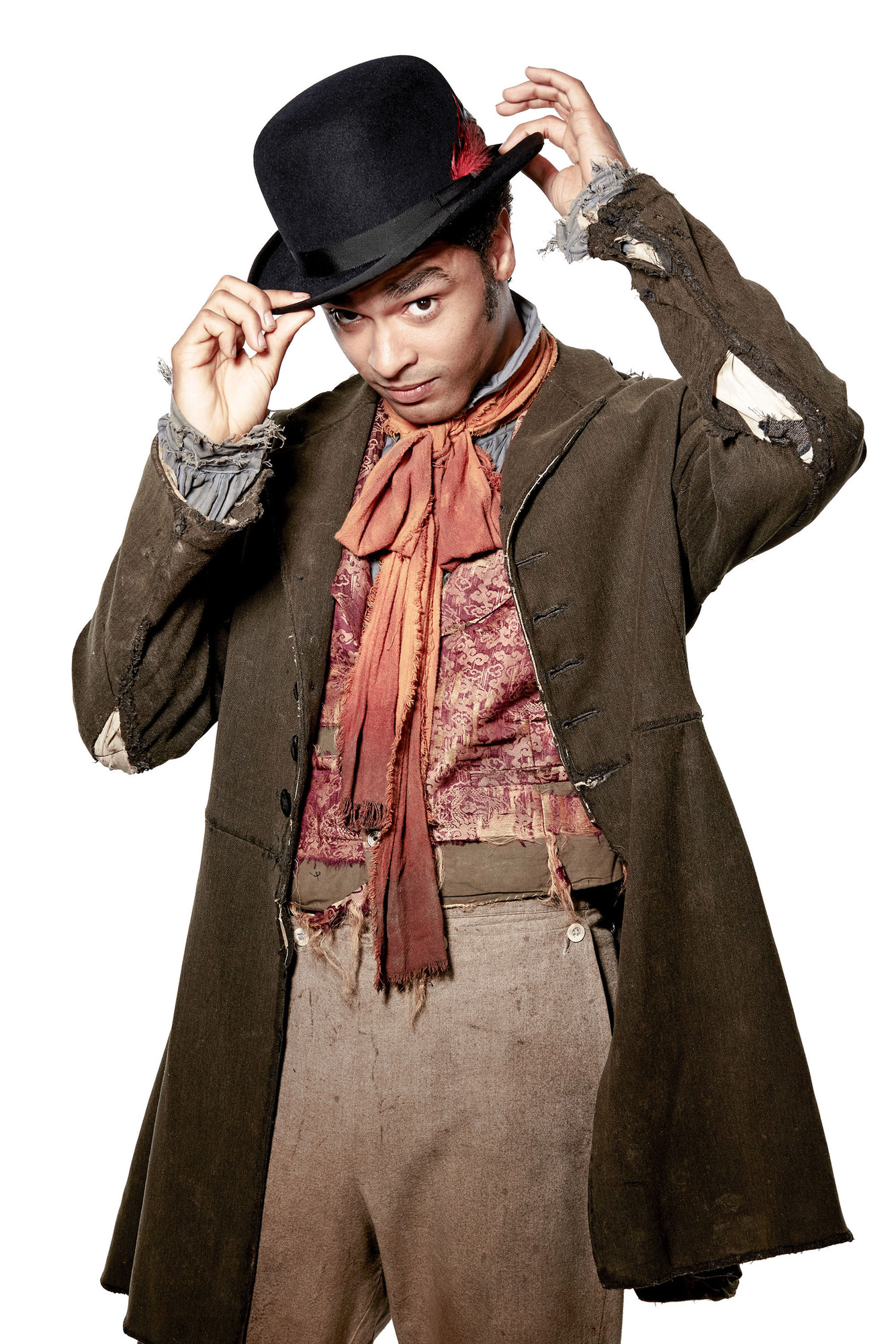Roots, BBC Four | reviews, news & interviews
Roots, BBC Four
Roots, BBC Four
Kunta Kinte and his family rivet attention again in well-cast, finely filmed miniseries

Those of us who saw the first, 1977 TV adaptation of Alex Haley's Roots in our teens still remember the shock and horror at its handling of a subject about which we knew little, American slavery. We know a lot more now, but the visceral reaction to inhumanity and injustice is no less strong.
Roots, originally commissioned by the History Channel, may be more predictable, staying to an extent within the parameters of a TV miniseries, but it also has a more epic scope as an ambitious tetralogy of two-hour dramas, each different in mood, skipping time and crossing generations as we get to know Kunta Kinte, the enslaved Mandingo warrior from Juffure sold into slavery on a Virginia plantation, and his offspring. By episode three, the branches are struggling towards the sun, The general drama of pain isn’t, by now, devoid of occasional episodes of happiness, and hope springs eternal with each new family member.
 The casting is superb, instilling confidence in every major character and complicity in their hope. The first two episodes are Kunta Kinte’s story, starting with his adolescent training in the Gambia – the locations, well handled, are South African – and his betrayal by a local tribe (the original series had the toubabs – “whiteys” – as the impressers). It’s not hard to believe in Kunta’s indomitable pride given the magnificent performance of former EastEnders and Doctor Who actor Malachi Kirby.
The casting is superb, instilling confidence in every major character and complicity in their hope. The first two episodes are Kunta Kinte’s story, starting with his adolescent training in the Gambia – the locations, well handled, are South African – and his betrayal by a local tribe (the original series had the toubabs – “whiteys” – as the impressers). It’s not hard to believe in Kunta’s indomitable pride given the magnificent performance of former EastEnders and Doctor Who actor Malachi Kirby.
Sympathy soon extends to the old slave musician on the plantation, played by the infallible Forest Whittaker, and – jump forward 10 years in episode two – to Belle (a luminous Emyatzy Corinealdi, pictured above with Kirby). She's the wise woman who nurses “Toby” – the slave name Kunta refuses to accept – back to life and hope after his cruellest punishment.
I challenge you not to wince and groan aloud at the tribulations of the family, the sunderings and cruelties which would seem the stuff of fiction did we not know how often they happened. Their stylised depiction – scenes of extreme violence often shown with sound levels reduced and careful camera angles – only heightens the strangeness. After the rape and birth-giving of Kunta and Belle’s daughter Kizzy (equally well played by the young Emyri Crutchfield and the older actor Anika Noni Rose), the action can afford to relax a little.
 Episode three focuses on Kizzy’s son Chicken George (Regé-Jean Page, pictured right, as winning in his way as Kirby), the boy who has a way with birds and grows up in the hope of buying his freedom. The new location also gives us the first toubab owner who isn’t a cardboard cut-out (and one of the few, in the shape of Jonathan Rhys Meyers’ Tom Lea, who can sustain an accent). Family wrenches here come in the ambivalence of the triangle between father, mother and son, the way we actually hope, as George does, for Lea’s survival in a duel, and the ultimate betrayal (Irish blood can turn a man to drinking and gambling in these cinematic sagas).
Episode three focuses on Kizzy’s son Chicken George (Regé-Jean Page, pictured right, as winning in his way as Kirby), the boy who has a way with birds and grows up in the hope of buying his freedom. The new location also gives us the first toubab owner who isn’t a cardboard cut-out (and one of the few, in the shape of Jonathan Rhys Meyers’ Tom Lea, who can sustain an accent). Family wrenches here come in the ambivalence of the triangle between father, mother and son, the way we actually hope, as George does, for Lea’s survival in a duel, and the ultimate betrayal (Irish blood can turn a man to drinking and gambling in these cinematic sagas).
This first Chicken George instalment starts out as Roots’ equivalent of the third opera in Wagner’s Ring, the tale of the brave young Siegfried who looks as if he might redeem the world (don’t laugh: the epic resonances are not so impertinent). In the wake of Nat Turner’s slave rebellion, though, it all turns darker and the episode ends on another cliffhanger. Through Haley’s telling of his ancestors’ stories, we know it must all turn out well in the end. But what colossal suffering and injustice along the way. For the viewers, and how much more so for the actors involved, the knowledge of that past only heightens the involvement in this nuanced and poetic telling of America’s (and Britain's) most shameful history.
rating
Share this article
The future of Arts Journalism
You can stop theartsdesk.com closing!
We urgently need financing to survive. Our fundraising drive has thus far raised £49,000 but we need to reach £100,000 or we will be forced to close. Please contribute here: https://gofund.me/c3f6033d
And if you can forward this information to anyone who might assist, we’d be grateful.

Subscribe to theartsdesk.com
Thank you for continuing to read our work on theartsdesk.com. For unlimited access to every article in its entirety, including our archive of more than 15,000 pieces, we're asking for £5 per month or £40 per year. We feel it's a very good deal, and hope you do too.
To take a subscription now simply click here.
And if you're looking for that extra gift for a friend or family member, why not treat them to a theartsdesk.com gift subscription?
more TV
 Mr Scorsese, Apple TV review - perfectly pitched documentary series with fascinating insights
Rebecca Miller musters a stellar roster of articulate talking heads for this thorough portrait
Mr Scorsese, Apple TV review - perfectly pitched documentary series with fascinating insights
Rebecca Miller musters a stellar roster of articulate talking heads for this thorough portrait
 Down Cemetery Road, Apple TV review - wit, grit and a twisty plot, plus Emma Thompson on top form
Mick Herron's female private investigator gets a stellar adaptation
Down Cemetery Road, Apple TV review - wit, grit and a twisty plot, plus Emma Thompson on top form
Mick Herron's female private investigator gets a stellar adaptation
 theartsdesk Q&A: director Stefano Sollima on the relevance of true crime story 'The Monster of Florence'
The director of hit TV series 'Gomorrah' examines another dark dimension of Italian culture
theartsdesk Q&A: director Stefano Sollima on the relevance of true crime story 'The Monster of Florence'
The director of hit TV series 'Gomorrah' examines another dark dimension of Italian culture
 The Monster of Florence, Netflix review - dramatisation of notorious Italian serial killer mystery
Director Stefano Sollima's four-parter makes gruelling viewing
The Monster of Florence, Netflix review - dramatisation of notorious Italian serial killer mystery
Director Stefano Sollima's four-parter makes gruelling viewing
 The Diplomat, Season 3, Netflix review - Ambassador Kate Wyler becomes America's Second Lady
Soapy transatlantic political drama keeps the Special Relationship alive
The Diplomat, Season 3, Netflix review - Ambassador Kate Wyler becomes America's Second Lady
Soapy transatlantic political drama keeps the Special Relationship alive
 The Perfect Neighbor, Netflix review - Florida found-footage documentary is a harrowing watch
Sundance winner chronicles a death that should have been prevented
The Perfect Neighbor, Netflix review - Florida found-footage documentary is a harrowing watch
Sundance winner chronicles a death that should have been prevented
 Murder Before Evensong, Acorn TV review - death comes to the picturesque village of Champton
The Rev Richard Coles's sleuthing cleric hits the screen
Murder Before Evensong, Acorn TV review - death comes to the picturesque village of Champton
The Rev Richard Coles's sleuthing cleric hits the screen
 Black Rabbit, Netflix review - grime and punishment in New York City
Jude Law and Jason Bateman tread the thin line between love and hate
Black Rabbit, Netflix review - grime and punishment in New York City
Jude Law and Jason Bateman tread the thin line between love and hate
 The Hack, ITV review - plodding anatomy of twin UK scandals
Jack Thorne's skill can't disguise the bagginess of his double-headed material
The Hack, ITV review - plodding anatomy of twin UK scandals
Jack Thorne's skill can't disguise the bagginess of his double-headed material
 Slow Horses, Series 5, Apple TV+ review - terror, trauma and impeccable comic timing
Jackson Lamb's band of MI5 misfits continues to fascinate and amuse
Slow Horses, Series 5, Apple TV+ review - terror, trauma and impeccable comic timing
Jackson Lamb's band of MI5 misfits continues to fascinate and amuse
 Coldwater, ITV1 review - horror and black comedy in the Highlands
Superb cast lights up David Ireland's cunning thriller
Coldwater, ITV1 review - horror and black comedy in the Highlands
Superb cast lights up David Ireland's cunning thriller
 Blu-ray: The Sweeney - Series One
Influential and entertaining 1970s police drama, handsomely restored
Blu-ray: The Sweeney - Series One
Influential and entertaining 1970s police drama, handsomely restored

Add comment